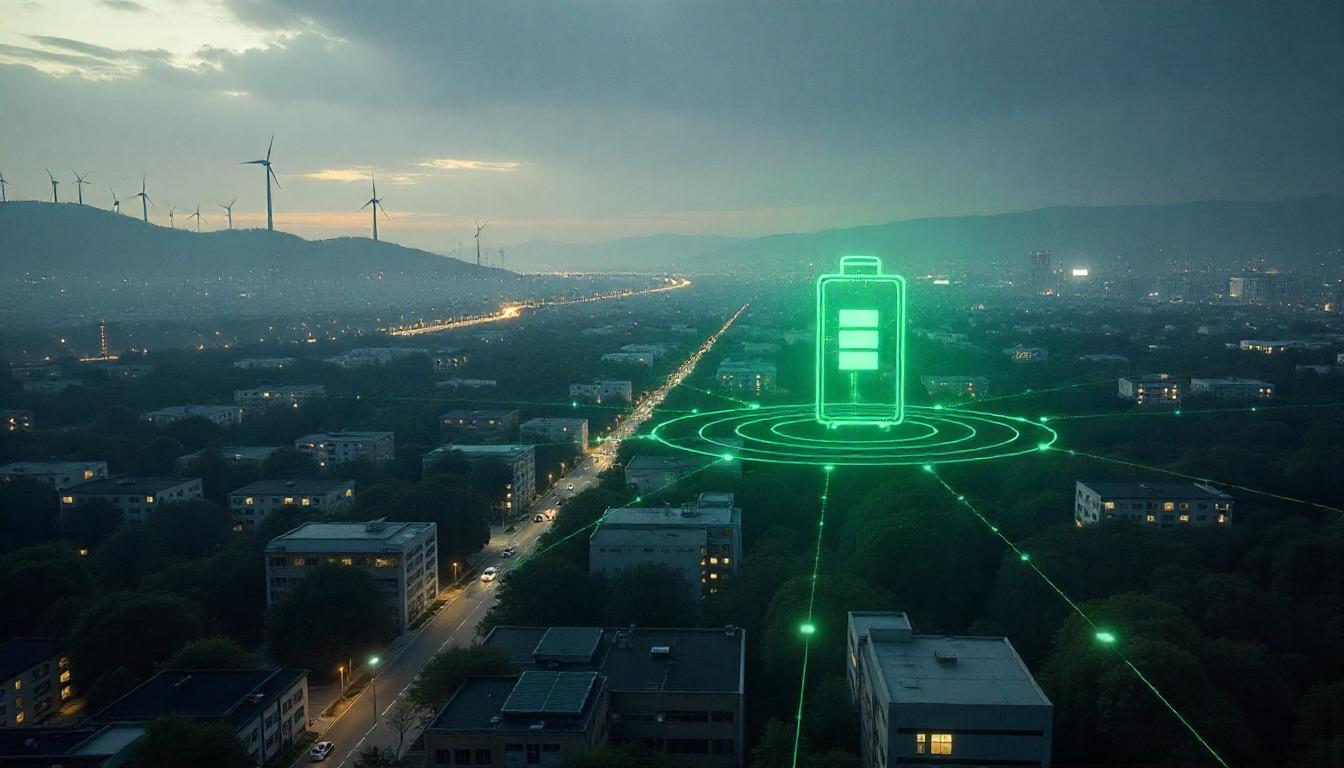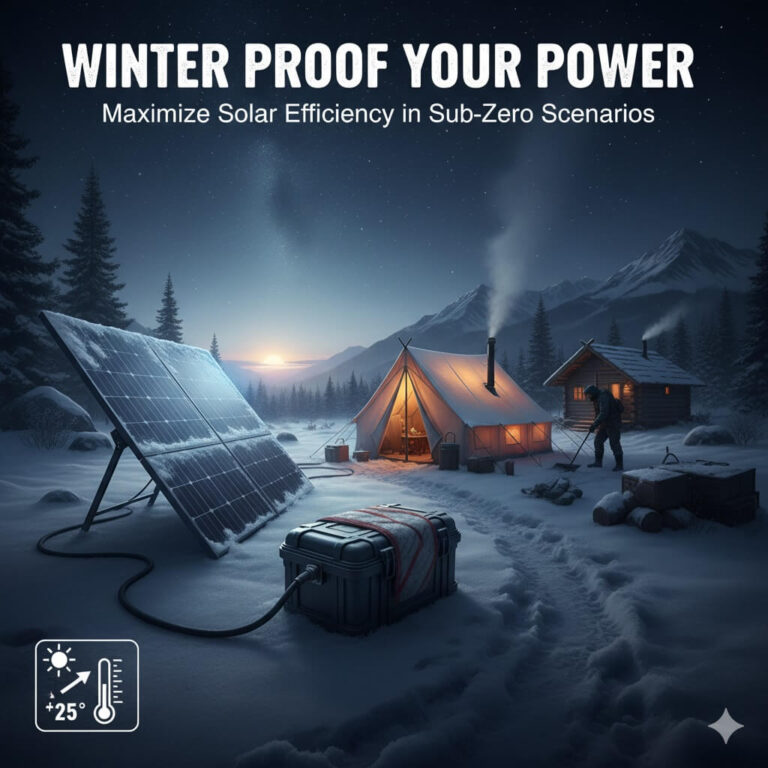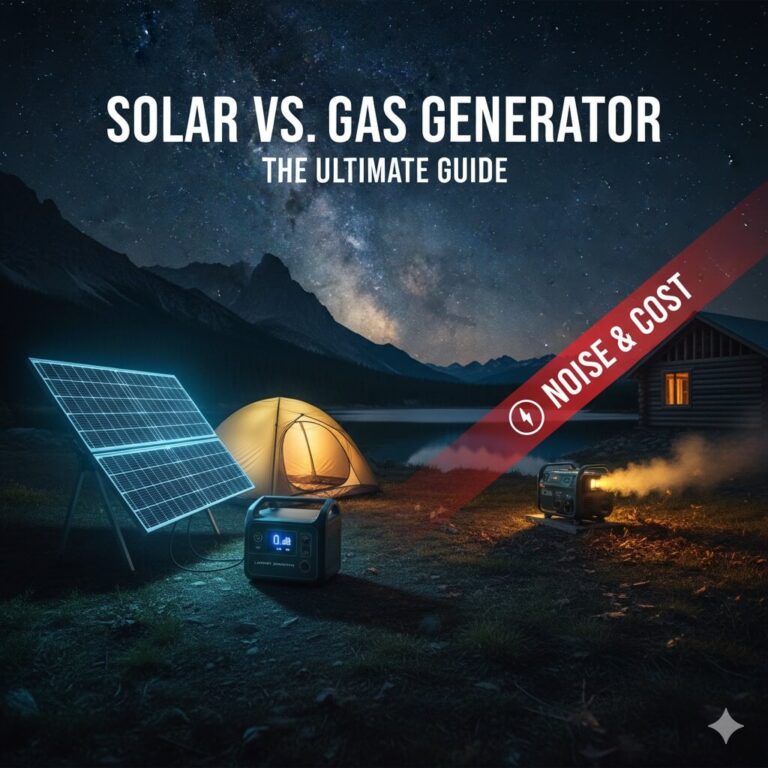Smart Grids & Energy Storage: Unlocking the Full Potential of Renewable Energy

The global shift to renewable energy is undeniable, with solar panels stretching across deserts and majestic wind turbines dotting coastlines. These clean sources are rapidly decarbonizing electricity grids worldwide, marking immense progress in combating climate change. Yet, as our grids become increasingly reliant on these powerful but inherently intermittent energy sources, a critical question emerges: How do we ensure a stable, reliable electricity supply when the sun doesn’t shine or the wind doesn’t blow?
Simply generating more renewable power isn’t enough; we need intelligent systems to manage and store it. This is where smart grids and energy storage emerge not just as enhancements, but as the fundamental enablers of a truly reliable, resilient, and fully decarbonized power system. Without them, renewable energy cannot reach its full potential, leading to inefficiencies and continued reliance on fossil fuel backups.
This article will explore how the synergistic relationship between smart grids and energy storage is transforming the energy landscape. We’ll delve into the core challenges of renewable energy integration, the intelligent solutions offered by smart grids, the diverse world of energy storage technologies, how these two pillars work together, current market trends, and real-world examples of their profound impact in turning the variability of renewables into a manageable asset, unlocking their full potential for a stable, sustainable future.
- 1. The Intermittency Challenge: Why Renewables Need a Smarter Grid
- 2. Smart Grids: The Intelligent Backbone of Modern Energy Systems
- 3. Energy Storage: The Grid’s Dynamic Buffer and Optimizer
- 4. The Powerful Synergy: How Smart Grids and Energy Storage Work Together
- 5. Real-World Impact: Case Studies in Grid Modernization
- 6. The Road Ahead: Future Outlook and Unlocking Full Potential
- Conclusion: The Intelligent Foundation for a Green Future
- Frequently Asked Questions (FAQs) About Smart Grids & Energy Storage
1. The Intermittency Challenge: Why Renewables Need a Smarter Grid
The inherent nature of renewable energy sources like solar and wind presents a unique challenge for traditional electricity grids. Unlike dispatchable power plants (like fossil fuel or nuclear facilities that can generate power on demand), solar and wind power output is variable and intermittent, directly dependent on weather conditions. The sun doesn’t always shine, and the wind doesn’t always blow, leading to unpredictable fluctuations in power generation.
This variability creates significant grid stability issues:
- Balancing Act: It becomes incredibly difficult to match fluctuating renewable supply with the grid’s real-time demand, which also varies throughout the day.
- Voltage & Frequency Deviations: Rapid, unmanaged changes in generation can destabilize the grid’s voltage and frequency, potentially damaging equipment, degrading power quality, or even causing widespread outages.
- Curtailment: When renewable generation outstrips demand or transmission capacity, excess power must be curtailed (wasted) to prevent grid overload.
- Reliance on Peaker Plants: To ensure continuous supply, grids often rely on fast-ramping fossil fuel “peaker plants” as backup, which undermines decarbonization goals.
- Economic Impact: This intermittency can lead to significant price volatility in wholesale electricity markets, impacting energy costs for consumers and increasing investment risks for energy producers.
Effectively integrating large amounts of renewable energy requires a fundamental shift in how electricity grids operate.
2. Smart Grids: The Intelligent Backbone of Modern Energy Systems
A smart grid represents a modernized electricity network that uses digital communication, information technology, and smart devices to monitor, manage, and optimize the delivery of electricity in real time. It’s a fundamental upgrade from the traditional one-way power flow, enabling a dynamic, two-way exchange of both power and information.
Key components that make a grid “smart” include
- Advanced Metering Infrastructure (AMI): Often called smart meters, these devices enable two-way communication between utilities and consumers, providing real-time data on energy usage and allowing for dynamic pricing.
- Sensors & Monitoring Systems: Deployed across the grid, these sensors provide granular data on electrical flows, equipment health, and potential faults.
- Distribution Automation: Automated systems remotely detect, isolate, and reroute power around faults, significantly minimizing outage times and improving reliability.
- Robust Communication Networks: Essential for real-time data transfer among all grid components, using a mix of wired and wireless technologies.
- Software & Analytics (AI, IoT, Big Data): Sophisticated platforms process vast amounts of data to optimize power flow, integrate distributed energy resources, predict demand fluctuations, and enable predictive maintenance.
For renewable energy integration, smart grids offer crucial functionalities:
- Real-time Visibility & Control: Utilities gain unprecedented insight into grid conditions, allowing for precise load balancing and voltage control.
- Distributed Energy Resources (DER) Integration: Seamlessly incorporate localized generation sources like rooftop solar, electric vehicle chargers, and microgrids directly into the grid.
- Demand Response (DR): Programs incentivize consumers to reduce or shift energy usage during peak times in response to pricing signals or grid needs, optimizing demand management.
- Self-Healing Capabilities: The grid can automatically detect and isolate faults, then reroute power to restore service faster, dramatically improving resilience.
The smart grid market is experiencing robust growth. Valued at approximately US$55.54 billion in 2024, it’s projected to expand to US$145.42 billion by 2030, with a Compound Annual Growth Rate (CAGR) of around 17%. This growth is driven by the increasing need for renewable energy integration, the rise of electric vehicles, and advancements in IoT and AI.
3. Energy Storage: The Grid’s Dynamic Buffer and Optimizer
While smart grids provide the intelligence, energy storage provides the muscle. Energy storage systems capture excess electricity during periods of high generation or low demand and release it back to the grid when needed, acting as dynamic buffers that transform intermittent renewables into dispatchable power.
Various energy storage technologies are deployed at grid scale:
- Batteries (Electrochemical): The most common for grid-scale applications.
- Lithium-ion (Li-ion): Dominant for short to medium durations (up to 8 hours), offering high energy density and rapid response times.
- Flow Batteries: Store energy in liquid electrolytes, suitable for medium to long durations with easy scalability.
- Pumped Hydro Storage (PHS): The most mature and widely used grid-scale storage, accounting for about 95% of global installations. It pumps water uphill when electricity is cheap and releases it through turbines when needed.
- Compressed Air Energy Storage (CAES): Compresses air into underground caverns for later release through turbines.
- Thermal Energy Storage: Stores energy as heat or cold for later use.
- Green Hydrogen: An emerging solution for very long-duration, inter-seasonal storage, where excess renewable electricity is converted into hydrogen.
These systems offer critical benefits for renewables integration:
- Firming & Smoothing: They convert the variable output from solar and wind into a consistent, reliable, and dispatchable power source.
- Peak Shaving: Energy stored during off-peak hours can be discharged during peak demand, reducing strain on the grid and avoiding the need for expensive, carbon-intensive peaker plants.
- Frequency Regulation & Ancillary Services: Energy storage can rapidly inject or absorb power to maintain grid frequency and voltage stability, crucial for grid health.
- Energy Arbitrage: Utilities or operators can buy electricity when it’s cheap (e.g., from abundant renewables) and sell it back to the grid when prices are high, generating revenue.
- Reduced Curtailment: Minimizing the waste of valuable renewable energy that would otherwise be curtailed.
- Backup Power & Resilience: Providing emergency power during outages, enhancing overall grid resilience.
Energy storage deployments are skyrocketing. In the U.S. alone, installations reached a record 12.3 GW / 37.1 GWh in 2024, a 33% increase over the previous year. Forecasts project another 15 GW / 48 GWh of deployments in 2025. States like California and Texas are leading the charge, but deployment is rapidly diversifying geographically.
4. The Powerful Synergy: How Smart Grids and Energy Storage Work Together
The true revolution in clean energy integration isn’t about smart grids or energy storage in isolation; it’s about their powerful, synergistic relationship. These two technologies are inextricably linked, forming the intelligent foundation of a modern, resilient, and sustainable power system.
- Real-time Orchestration: Smart grids provide the essential intelligence to optimally manage energy storage assets. Real-time data from smart meters, sensors, and grid monitoring systems informs precisely when and where to charge or discharge storage systems for maximum efficiency and stability.
- Predictive Analytics & Forecasting: AI-driven smart grid software can accurately forecast renewable output (e.g., predicting solar irradiance or wind speed) and anticipate demand fluctuations. This allows storage systems to be strategically pre-charged or discharged, preemptively balancing the grid.
- Distributed Grid Management: Smart grids facilitate the seamless integration and coordination of distributed energy resources (DERs), such as rooftop solar with home batteries, electric vehicles, and community microgrids. They turn individual assets into a collective, responsive network that can support the larger grid.
- Enhanced Demand-Side Flexibility: Smart grids empower active consumer participation through demand response programs, allowing them to shift energy usage based on grid signals. This flexibility is further optimized by the availability of grid-scale energy storage, which can absorb excess supply or meet sudden demand spikes.
- Dynamic Resilience: Together, smart grids and energy storage create a far more dynamic and resilient grid. It can automatically adapt to disruptions, seamlessly balance supply and demand, and ensure continuous power delivery even with very high renewable penetration, significantly reducing the risk of outages.
This combination effectively transforms the inherent variability of renewables from a challenge into a manageable asset. Without this intelligent orchestration and buffering capacity, the full decarbonization potential of renewable energy would remain largely untapped.
5. Real-World Impact: Case Studies in Grid Modernization
The concepts of smart grids and energy storage are already being put into practice globally, demonstrating their transformative impact:
- Copenhagen, Denmark: A leading example in smart grid implementation, Copenhagen leverages its intelligent network to effectively manage high penetration of variable wind power, ensuring a stable and reliable energy supply for the city.
- Masdar City, Abu Dhabi: Built with sustainability at its core, Masdar City relies on a sophisticated smart grid that integrates significant solar power, optimizing energy use within its urban environment.
- Austin, Texas (Austin Energy): This utility is a U.S. leader, committed to achieving 65% renewable energy by 2027. Its smart grid infrastructure effectively integrates vast amounts of wind, solar, and biomass, demonstrating efficient power distribution and enhanced reliability.
- Hawaii: With its abundant sunshine, Hawaii has very high solar penetration, necessitating significant deployment of battery storage and advanced smart grid solutions to maintain grid stability and resilience.
- California & Texas: These U.S. states are leading the charge in utility-scale battery deployments, using these assets to firm renewable energy output, provide critical grid services, and manage peak demand.
These examples underscore that the synergistic relationship between smart grids and energy storage is not just theoretical; it’s actively building the resilient, clean energy infrastructure of the future.
6. The Road Ahead: Future Outlook and Unlocking Full Potential
The trajectory for smart grids and energy storage points firmly upward. The future of electricity grids will be increasingly digitized, decentralized, and dynamic, driven by these two pillars.
- Continued Growth: Aggressive decarbonization targets, falling technology costs (especially for batteries), and increasing grid stress from climate events will continue to fuel robust market growth for both smart grid infrastructure and energy storage deployments.
- Technological Advancements: Innovation will persist, with breakthroughs in battery chemistries (e.g., solid-state, non-lithium alternatives), longer-duration storage solutions (like advanced flow batteries, CAES, and the emerging role of green hydrogen), and more sophisticated AI/IoT integration within smart grids.
- Policy & Regulatory Evolution: Supportive policies, clear market signals, and updated regulatory frameworks are crucial to incentivize investment, streamline permitting, and overcome deployment hurdles.
- Cybersecurity Focus: As grids become more interconnected and intelligent, robust cybersecurity measures will be paramount to protect critical infrastructure from malicious attacks.
- Consumer Empowerment: Smart grids will increasingly empower consumers to participate actively in energy management through smart devices, home energy management systems, and flexible demand response programs.
Conclusion: The Intelligent Foundation for a Green Future
While solar and wind generate clean energy, smart grids and energy storage are the essential, intelligent foundation that transforms this intermittent power into a stable, reliable, and truly resilient electricity supply. They are the twin pillars enabling the grid to adapt, self-heal, and optimize in real-time, ensuring consistent power for homes and industries.
This powerful combination is not merely an upgrade; it is the fundamental shift that unlocks the full potential of renewable energy, accelerating our journey to a fully decarbonized future. By intelligently managing and buffering clean power, we are building an energy system that is not only environmentally sustainable but also inherently more secure and efficient.
Is your organization ready to leverage the power of smart grids and energy storage to future-proof its energy strategy? Explore how these transformative technologies can enhance your energy resilience, reduce costs, and accelerate your path to sustainability. Discover the intelligent solutions that are building the grid of tomorrow, today.
Frequently Asked Questions (FAQs) About Smart Grids & Energy Storage
- Q: What is the primary problem that smart grids and energy storage solve for renewable energy?
- A: They primarily solve the problem of intermittency and variability. Solar and wind power depend on weather conditions, leading to fluctuating output. Smart grids and energy storage ensure a stable, reliable power supply by intelligently managing and storing this variable generation.
- Q: How do smart grids differ from traditional electricity grids?
- A: Traditional grids are one-way systems designed for centralized power. Smart grids are two-way systems that use digital communication, sensors, and analytics to monitor, manage, and optimize power flow in real time, allowing for better integration of distributed energy resources and greater responsiveness.
- Q: What are the most common types of energy storage used on the grid?
- A: The most common types are Pumped Hydro Storage (PHS) for large-scale, long-duration storage and lithium-ion batteries for faster-response, short-to-medium-duration grid support. Other technologies like flow batteries and compressed air energy storage are also gaining traction.
- Q: How do smart grids and energy storage benefit consumers?
- A: Consumers benefit from more reliable power (fewer outages), better power quality, the potential for lower electricity bills through demand response programs, and the ability to integrate their own renewable energy sources like rooftop solar with greater ease.
- Q: Are these technologies expensive to implement?
- A: Initial investment costs for smart grid infrastructure and large-scale energy storage can be substantial. However, the long-term benefits in terms of grid efficiency, reduced curtailment of renewables, enhanced reliability, and avoided costs from building new fossil fuel plants make them economically viable and increasingly attractive investments.



